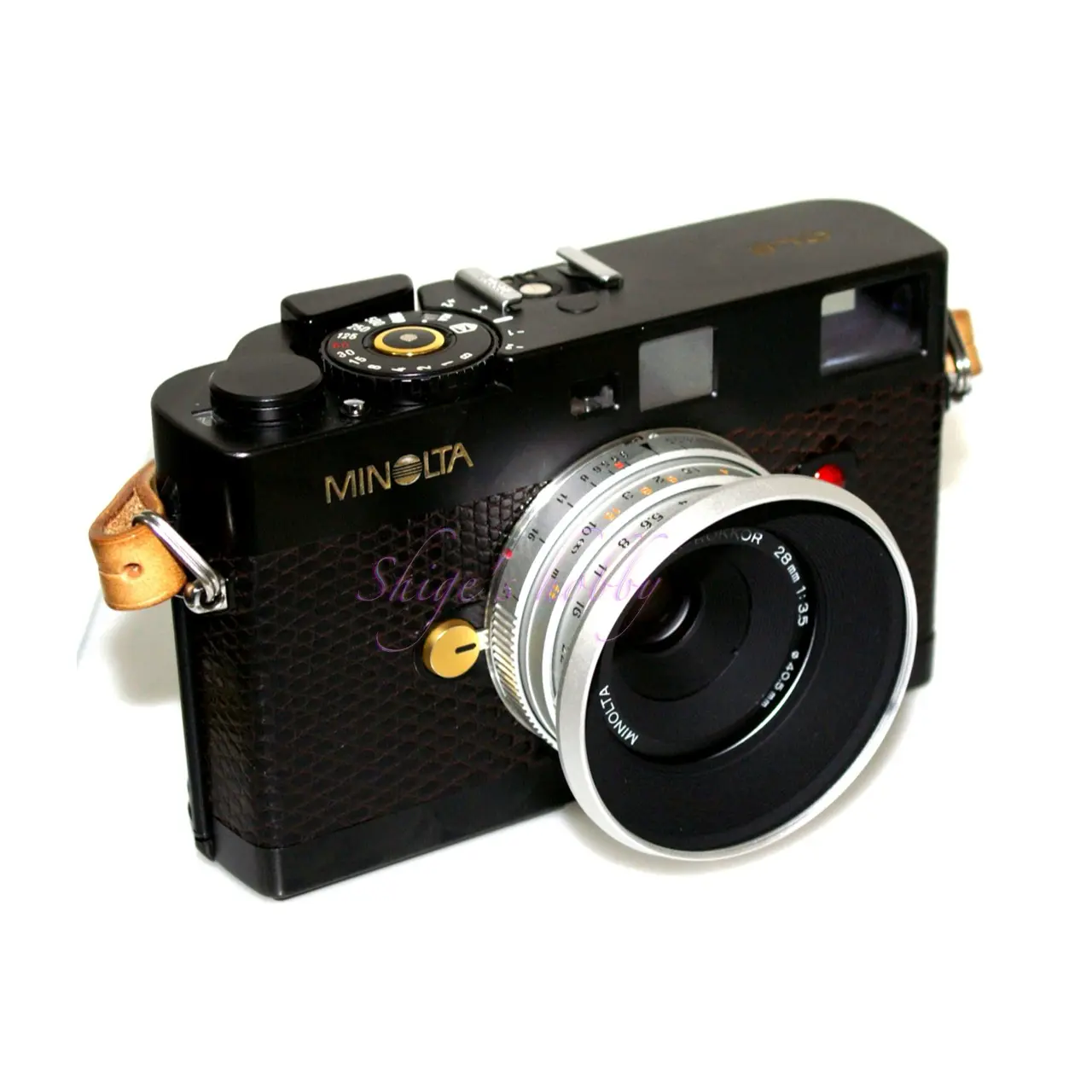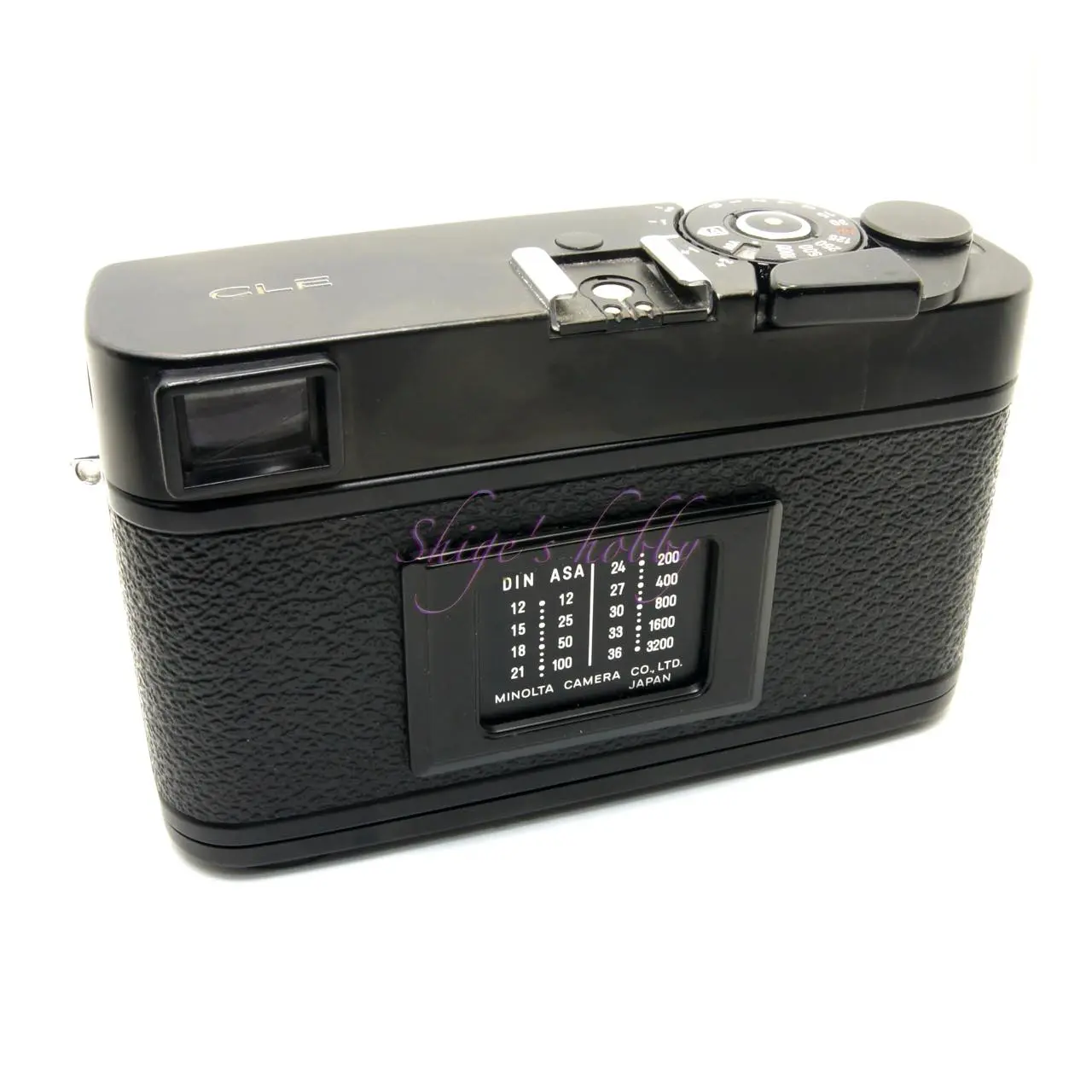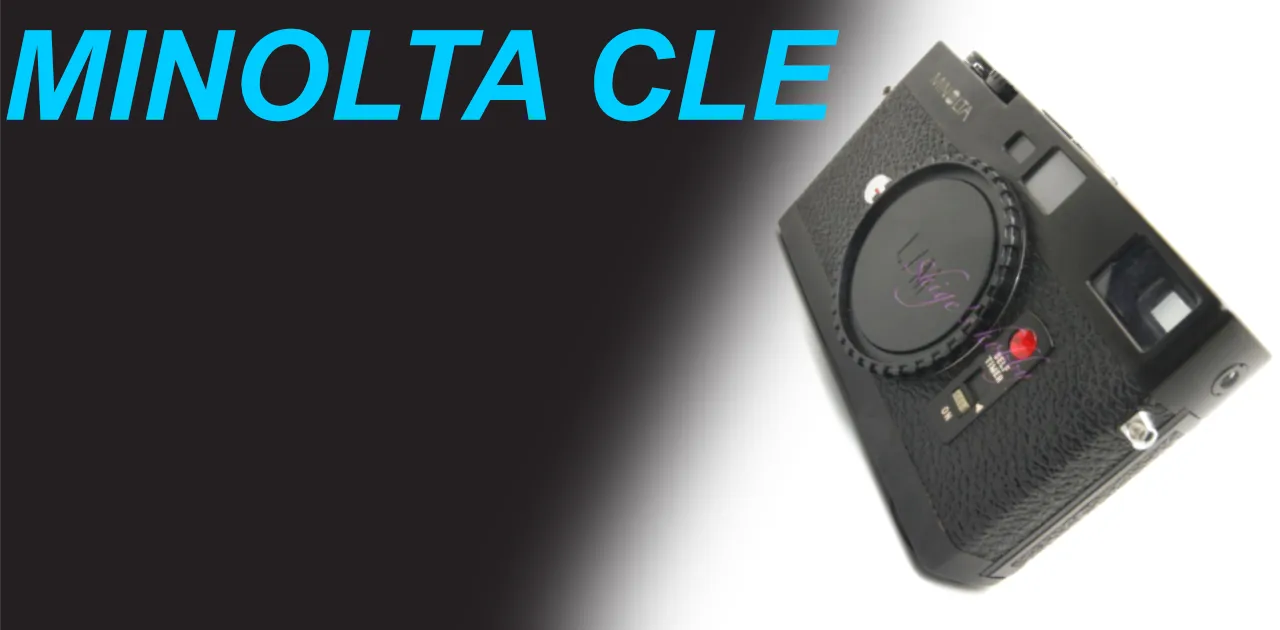Last updated on 2025-09-07
A review and sample photos taken using the FUJIFILM TIARA 28mm and LEICA ELMARIT M 28mm 5th on the MINOLTA CLE.
- Please see the disclaimer regarding advertising here.
- Italicized links in the text are advertisement links that take you to other sites.
Table of contents

Gallery
The following lenses and films were used to take the sample images.
- FUJIFILM TIARA M mount modify 28mm F3.5(Ms-Optics) +FUJIFILM 100C
- LEICA ELMARIT M 28mm F2.8 5th +KODAK GOLD 400
Review


1.Overview
The MINOLTA CLE, released in 1981, was the world’s first Leica M-mount rangefinder camera with TTL direct metering automatic exposure control and an electronically controlled shutter.
It is the successor to the Leitz-Minolta CL, which Minolta co-developed with Leica, but for various reasons Leica decided not to be involved in this project and the camera was sold by MINOLTA alone.
The viewfinder frames are available in 28mm, 40mm, and 90mm. As explained below, the tabs for extending the frame are different from those on the Leica M, so the 28mm frame will not appear even if a 28mm lens other than the M ROKKOR is attached.
The shutter has a bulb shutter speed of up to 1/1000.
It uses either two SR44 button cell batteries or two LR44 batteries.
2.Usability
The MINOLTA CLE features an autoexposure function that automatically determines the shutter speed after you select the aperture. Leica didn’t include this feature until the Leica M7 in 2002, so its inclusion 21 years ago is a testament to the Japanese camera manufacturer’s expertise in electronics.
The body is made of cheap plastic and feels cheaper than other M-series Leica cameras. While this may only be an issue with my camera, the battery compartment cover was loose and would sometimes come off during use, causing the battery to fall out. The CLE’s dedicated grip covers the battery compartment cover, so keeping the grip attached prevented this issue.
The shutter feel is quite light, and the shutter sound is a bit muffled when shooting with a cloth. The viewfinder magnification is low and the base length is short, making it difficult to use with telephoto lenses. Also, some older cameras have a faint image in the viewfinder, so we recommend checking the condition of the viewfinder before purchasing.
This camera differs from other M-series Leica cameras in its unique viewfinder frame.
The CLE’s viewfinder frame display is automatically displayed based on the length of the claws on the lens, and the photographer cannot change the viewfinder frame using a lever on the front of the camera, as is the case with some Leica M-type cameras.
The automatic viewfinder frame display settings are shown in the table below. In order to separate the 28mm and 90mm displays, the CEL assigns the 28mm viewfinder frame display to the 35/135mm viewfinder frame display setting that the CLE does not use.
| Finder Frame | Finder frame display tab length | MINOLTA CLE | LEICA M |
| 28/90 | Long | 90 | 28/90 |
| 50/75 | Middle | 40/50 | 50/75 |
| 35/135 | Short | 28 | 35/135 |
The biggest drawback to its general-purpose use was the difference in the viewfinder frame display from Leica, and since I mainly used 35mm lenses, the lack of a 35mm viewfinder frame was disappointing.
I have purchased this camera twice, once in 2007 and again in 2024.
The 2007 model was well-maintained and in good condition, with some parts repainted gold and the leather upholstery replaced with lizard skin. This camera had a customized exterior and was on sale for a low price, so I bought it on impulse. I keep a diary of the shots I took with three rolls of Kodachrome (KR64), one roll of monochrome film, and one roll of negative film.
The 2024 purchase came as a junk camera and lens set.
The lens was in decent condition, but the camera was in pretty bad condition, with a viewfinder full of dust, faint double images, and a torn top cover—just as described, it was in a junk condition. I ran a roll of negative film through it to check the mechanical parts and make sure there were no leaks, so I asked the guy at the used camera shop how much this CLE would be worth if I were to exchange it for a Hexar RF. After looking at its condition, he said, “That particular camera has no value to us, but if you keep it on consignment, you might be able to sell it eventually.” Since it wasn’t in good condition, I took a photo of the exterior and put it up for auction as a junk item for a buy-it-now price. It sold in just a few minutes and left my house. I’m sure there are people looking for an inexpensive CLE for parts or something.
3.Summary
In conclusion, to sum up the MINOLTA CLE is an easy-to-use rangefinder camera with an autoexposure function. The viewfinder is fine for using wide-angle lenses, but the need for a 35mm tab to display the 28mm frame is a bit of a hassle.
The compact body is appealing, but it’s a camera that requires you to consider whether you can tolerate some of its drawbacks before purchasing.
Specifications, considerations, etc.
As noted on the M Rokkor 28mm page, the M-mount tab position for displaying the 28mm frame on the CLE is the same as the lens tab position for displaying the 35/135mm frame on an M-type Leica camera. Therefore, when the second-generation or later Elmarit-M 28mm is attached to the CLE, the 28mm frame is not displayed, but the 90mm frame is.
Interestingly, the original Elmarit-M 28mm also has a 35/135 tab length, so when attached to a Leica M-type camera capable of displaying a 28mm viewfinder frame, the 28mm viewfinder frame is not displayed. I am a great fan of the original Elmarit, so I always use an external viewfinder when using it.
Although the CLE displays the 28mm viewfinder frame with the original Elmarit 28mm, because the rear lens element encroaches significantly within the original Elmarit’s lens, the CLE’s autoexposure may not work properly.
The CLE’s viewfinder frame can be thought of as almost 28mm as the entire outside viewfinder, so if you’re not particular about the frame display, it might not be a problem.
However, if you use an M Rokkor 28mm with a Leica M-type camera, a 35mm frame will be displayed, so I think it’s better to use an external viewfinder. The viewfinder frame is pretty approximate anyway, so if that’s all you have, it’s practical to just be conscious of shooting slightly within the 40mm frame.
In terms of camera performance, the KONICA HEXAR RF, which was released later, is equipped with auto exposure and auto winding, and its viewfinder frame is compatible with the Leica M’s, making it a more electronic and convenient camera than the MINOLTA CLE.
| Camera name | LEITZ MINOLTA CL | MINOLTA CLE | HEXAR RF |
| Finder | Real image rangefinder/reverse Galileo perspective finder | ← | ← |
| Finder inside | Frequent use of half mirrors | Frequent use ofprisms | ← |
| finder magnification | 0.6 | 0.58 | 0.6 |
| finder frame | 40/50、40/90 | 28、40、90 | 28/90、35/135、50/75 |
| Baseline length (mm) | 31.5 | 49.5 | 69.2 |
| Effective baseline length (mm) | 18.9 | 28.8 | 41.5 |
| Minimum shooting distance | 0.8m | 0.8m | 0.7m |
| Shutter | Vertical travel/cloth curtain focal plane shutter | Electronically controlled, horizontal travel, cloth curtain focal plane shutter | Electronically controlled, vertical travel, metal focal plane shutter |
| Shutter speed | 1/1000-1/2sec・B | 1/1000-1sec・B | 1/4000〜16sec(オート) 1/4000〜1sec(マニュアル) |
| Shooting method | Manual | Aperture priority automatic exposure Manual (no light meter response) | Aperture priority automatic exposure Manual (with exposure meter response) |
| Photometry method | Arm type, center weighted, TTL direct metering | Shutter curtain, center-focused average, TTL direct metering | Shutter curtain/average/TTL direct metering |
| PHOTO-DETECTOR | CdS | SPD (silicon photodiode) | ← |
| Battery | MR-9 | SR44(G13) x2 LR44(A76) x2 | CR2-3V 2本 |
| ISO/ASA | 25〜1600 | 25〜1600 | 6〜6400・DX |
| Size(mm) W x H x D | 121 x 76 32 | 124.5 x 77.5 x 32 | 139.5 × 80 × 35 |
| Weight(g) | 440 | 375 | 560 |
| Release date | 1973 | 1998.2 | Normal(1999.1) Limited(2001) |
Options
- grip
- Dedicated flash (auto-electro flash CLE)
- Dedicated lens
| Focal length | Lens name | Release date |
| 28mm | M ROKKOR | 1981.2 |
| 40mm | M ROKKOR | 1981.2 |
| 90mm | M ROKKOR | 1981.2 |
Reference links
Affiliate links

Amazon Prime Sale
Update history
- 2025.9.6


Be First to Comment